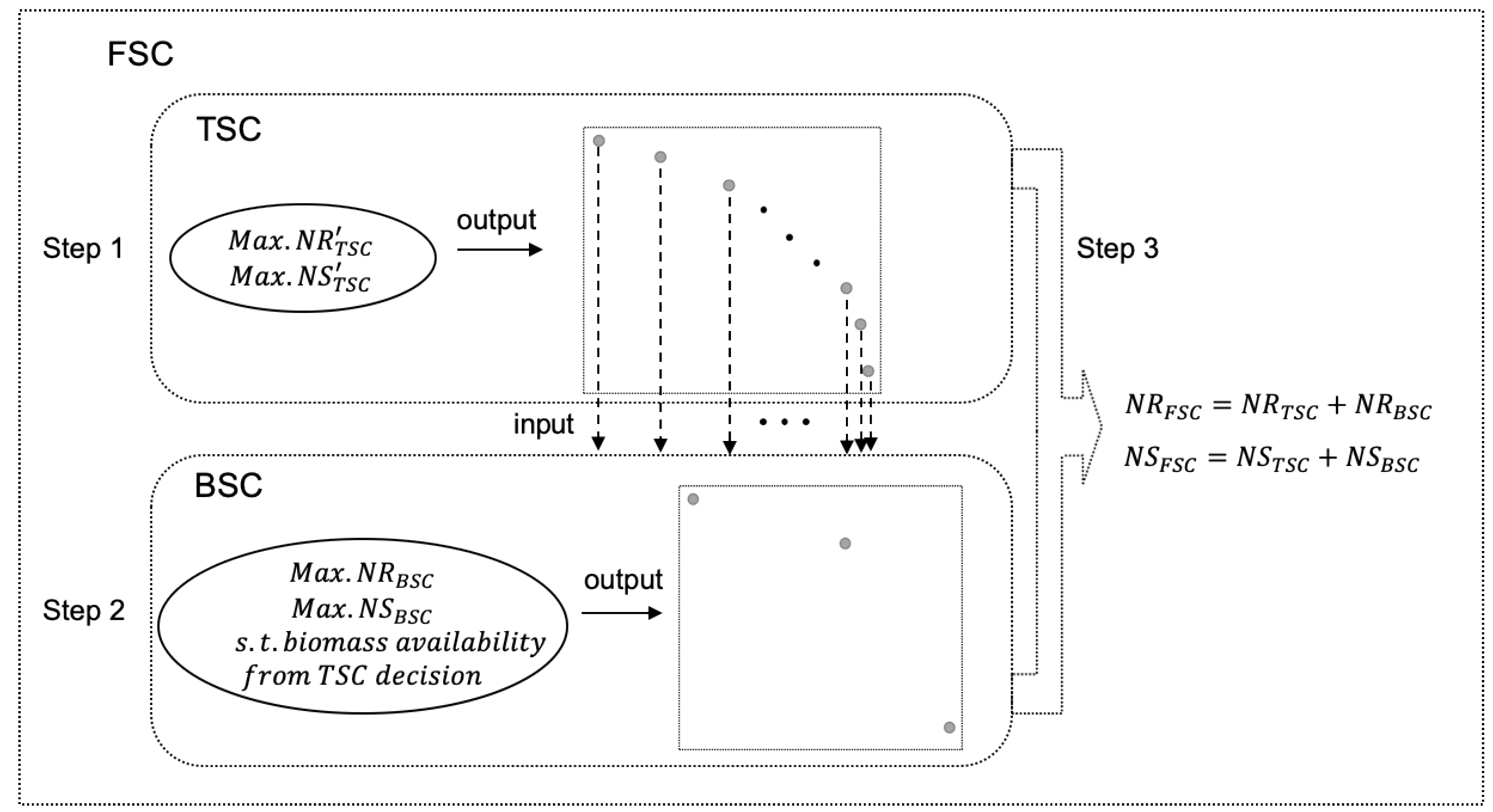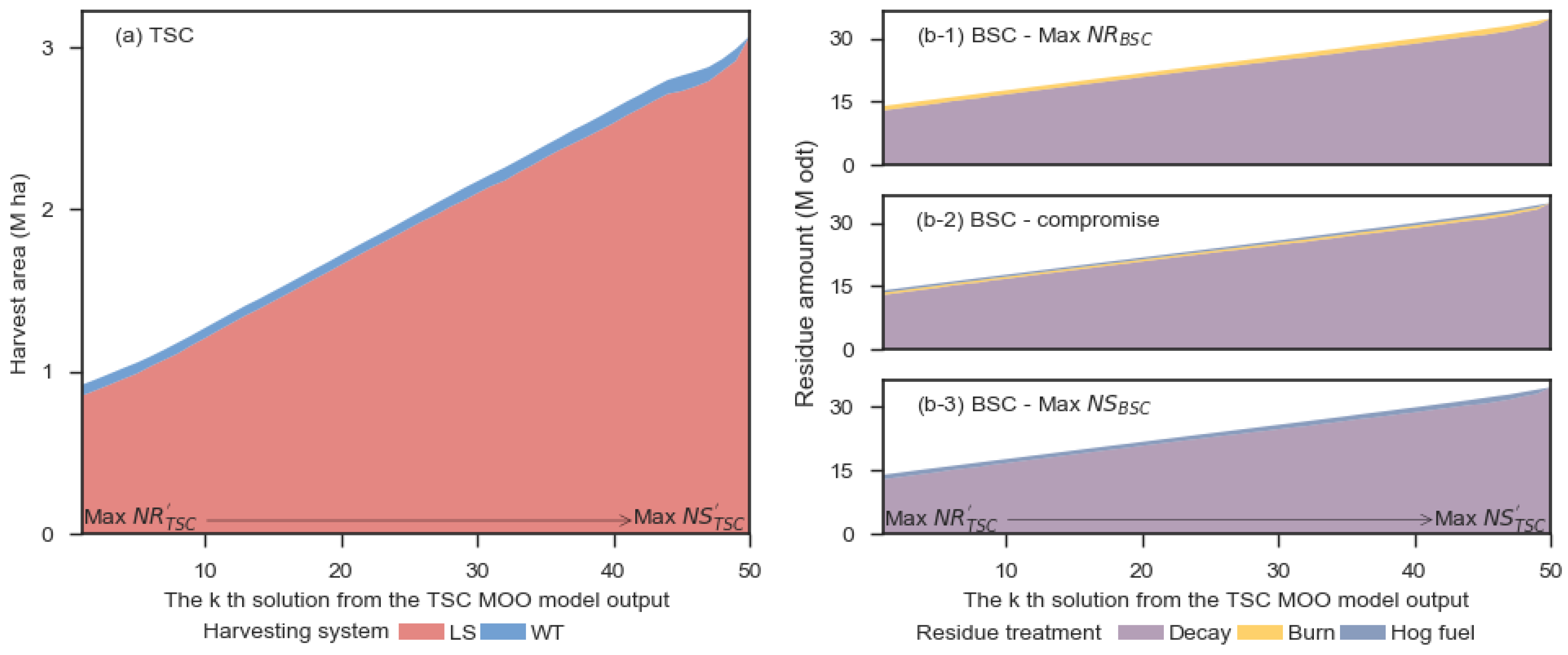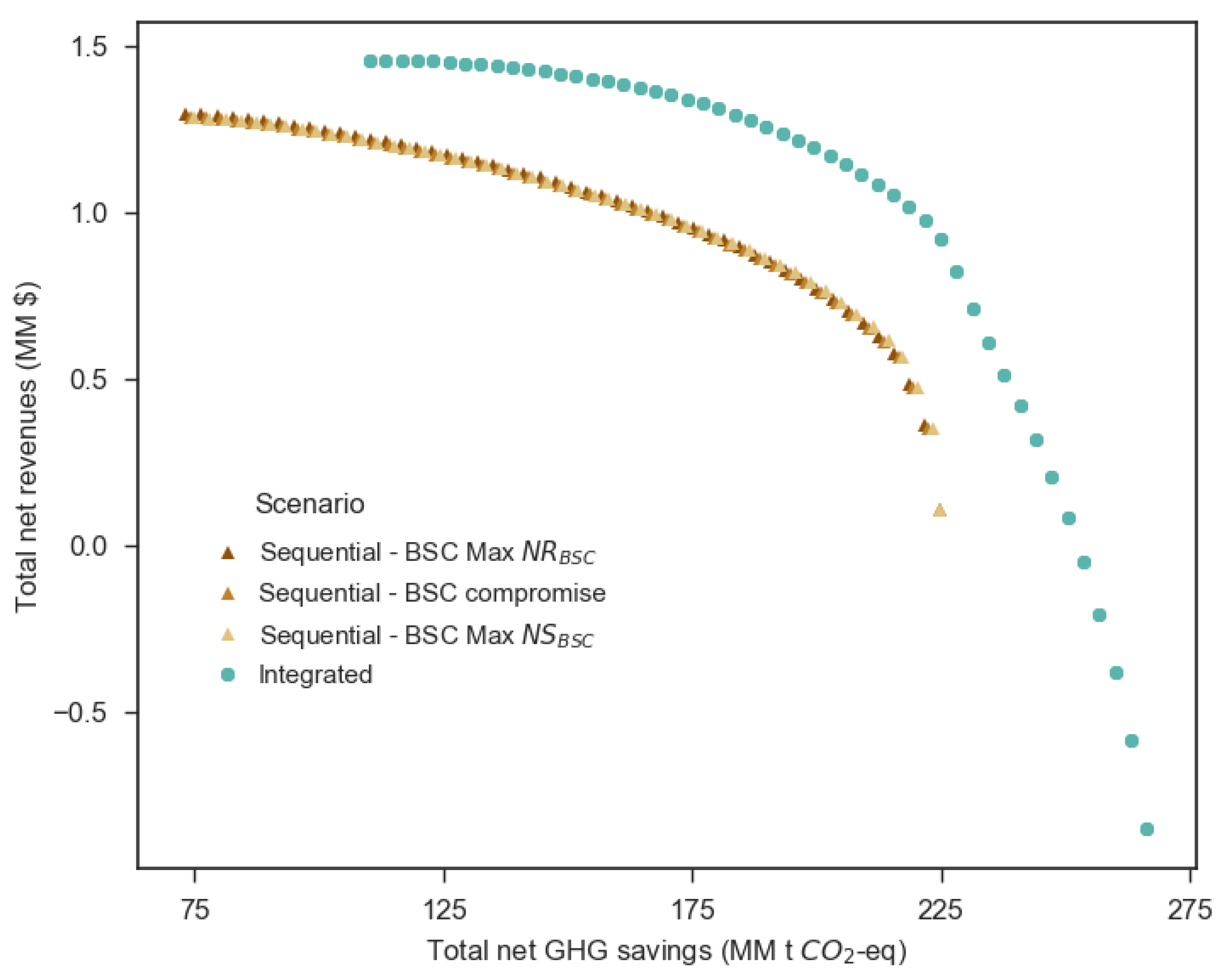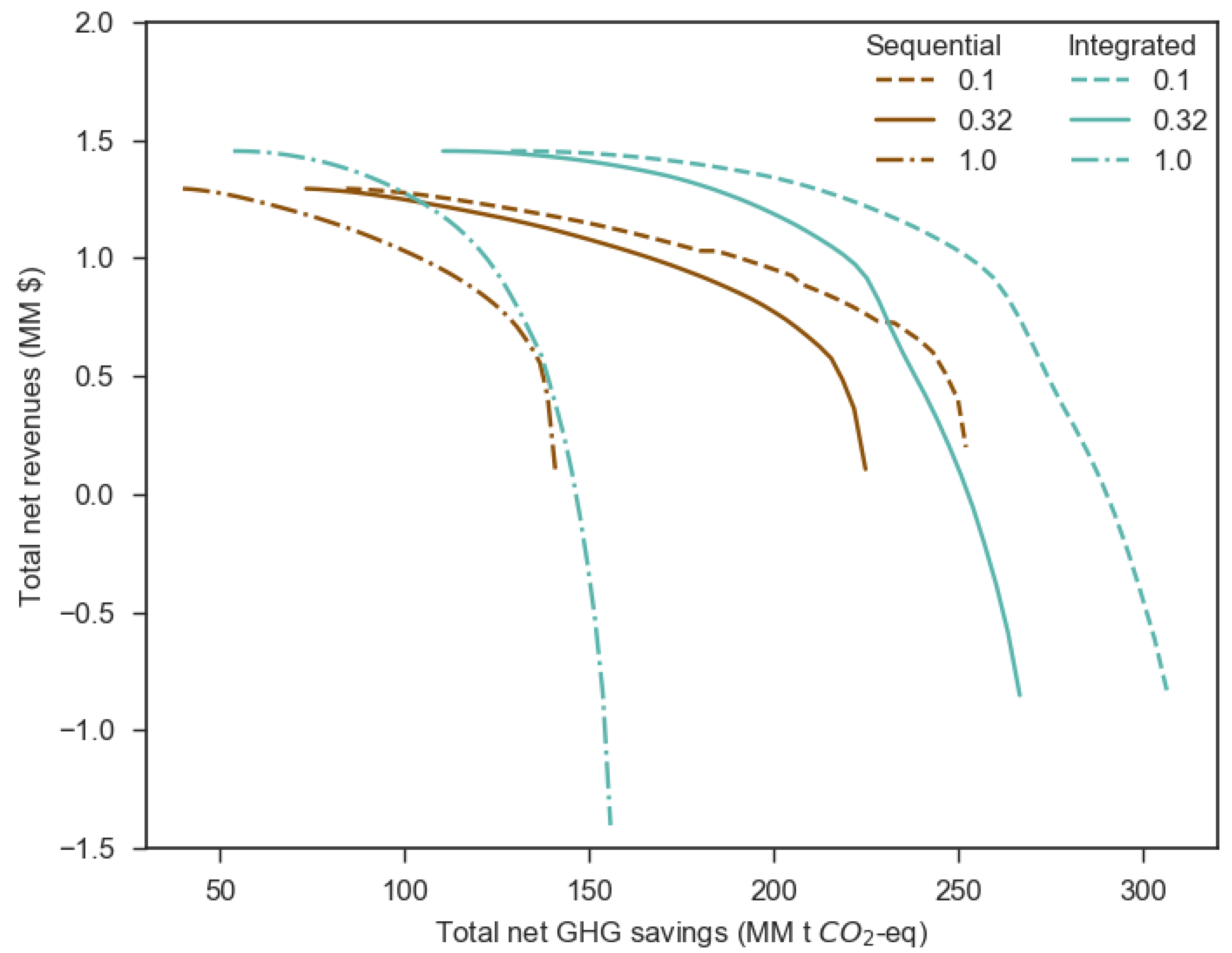1. Introduction
The recent mountain pine beetle (
Dendroctonus ponderosae Hopkins, MPB) epidemic has affected massive areas of forest in North America [
1]. Between the years 1996 and 2013, Colorado severely suffered from MPB infestations, and more than 1.38 million ha of forest land were affected [
2]. Landowners and local communities suffered enormous economic costs due to degradation in wood quality [
3], reductions in timber production [
4], and the loss of long-term stability of wood supply in the region [
5]. Negative influences are also reported on non-timber values, including landscape preference [
6], recreation [
7], and housing depreciation in the outbreak areas [
8].
Environmental impacts include increased tree mortality that weakens forest ecosystem services [
9], affects wildlife species population and habitat [
10], and alters forest fuel structure and fire behavior [
11,
12]. Dead trees negatively contribute to climate change [
13], and become a net source of carbon as they decay.
Salvage harvest of dead trees provides an opportunity to utilize forest resources otherwise wasted, contributing to the economies of rural areas and local wood product industries. It is estimated that beetle-killed logs can still yield 10%–20% of the value of healthy logs, depending on extent of damage [
14]. Prestemon et al. [
15] reported there are 0.56 billion m
3 of dead timber available for salvage across 8.22 million ha in 12 western states. This represents a significant amount of revenue for affected landowners to mitigate their economic losses. Alternatively, use of salvage timber can reduce carbon emissions from decaying wood in the infested forests [
16]. Replacing non-renewable resource processing with less energy-intensive manufacturing necessary to produce wood products is another benefit to using dead beetle-killed wood [
17,
18]. Timber products can also serve as carbon storage while in use [
19], can substitute fossil fuels as energy feedstock [
20], or continue to preserve carbon in the landfill at the end of its service life [
21].
In addition to timber production, degraded wood and logging residues (e.g., tree tops, branches and non-merchantable parts) are by-products of salvage harvesting, and can serve as feedstock for bioenergy production [
22]. Salvaged trees might fail to meet the quality of lumber or pulp and paper production due to wood degradation over time, especially when salvage harvest has been significantly delayed [
23]. This can lead to a large amount of biomass residue and potential high-quality bioenergy feedstock with high ratio of woody composition and low moisture content [
24]. Further utilizing salvage trees for bioenergy production avoids costs and emissions of greenhouse gas and particulate matter associated with open pile burning [
25,
26]. Woody debris pile burning is often required to reduce the risks of fire, and to prepare harvest sites for regeneration [
27,
28]. Bioenergy production also reduces society’s heavy dependence on fossil fuels and contributes to climate change mitigation [
29,
30].
Because MPB-infested stands often have high harvesting costs due to complicated stand conditions [
31] and low product values due to wood defects [
32], timber salvage often has a narrow profit margin, and may be unprofitable in some forest areas [
15]. In addition, the high costs of comminution and transportation of biomass have been obstacles to the wide utilization of beetle-killed wood for bioenergy [
33]. Although producing timber and bioenergy products from beetle-killed forests can potentially reduce GHG emissions, environmental benefits are sometimes considered unaffordable. Understanding the trade-offs between economic and environmental benefits of beetle-kill resource utilization is important to effective decision-making on salvage harvest operations and supply chain management.
To achieve sound forest supply chain management, mathematical optimization is frequently used to support the decision-making process [
34,
35]. If there is only one stakeholder managing all resources in the forest supply chain, bioenergy can be treated as a by-product from timber production and included as part of the optimization [
36,
37,
38]. However, in a fragmented supply chain, collaborative decision making among multiple stakeholders becomes challenging.
Previous studies have exclusively dealt with either timber products [
39,
40] or bioenergy feedstocks [
41,
42]. Links between production of the two products have yet to be thoroughly investigated. Such a gap is caused by the fact that timber production is at much greater scales in amounts and values than bioenergy production, with the latter having a minimal influence on the former. As a result, timber supply chain studies sometimes neglect treatment of biomass residues [
34,
43,
44]. Bioenergy supply chain studies [
45,
46] often assume biomass residues become available at the landing in a ready-to-use form and at no cost.
The timber and bioenergy production decision-making processes are made separately and sequentially. Barriers to producing and utilizing forest biomass for bioenergy include the technical and economic feasibility of biomass feedstock logistics, often limited in comparison to conventional silvicultural treatments and harvesting methods. When utilizing MPB-infested forest resources where lower timber product values and a higher proportion of biomass residues occur, cooperation between timber and bioenergy production requires strengthening to enhance the economic feasibility of forest salvage utilization. Integrating timber and bioenergy production in planning may improve the performance of the entire forest supply chain network.
In recent years, an increasing number of studies have adopted the multi-objective optimization (MOO) technique [
47] to evaluate the environmental impacts of the biomass supply chain, in addition to its economic performance [
48,
49]. The economic objective is often formulated to minimize operation costs [
50,
51], or to maximize net revenues [
52,
53,
54]. Environmental objectives are addressed using a variety of criteria, e.g., Eco-indicator 99, IMPACT 2002+, and the carbon footprint [
52,
53,
55]. Minimizing product life cycle GHG emissions via the Life Cycle Assessment (LCA) [
56] has been used most frequently, due to interests in mitigating climate change [
50,
51,
57].
Cambero et al. [
58] argued that minimizing GHG emissions does not guarantee maximum environmental benefits when considering the substitution effect of wood products. Maximizing the net GHG emission savings is a more appropriate environmental objective for the optimization model. Similarly, Sacchelli et al. [
54] optimized the environmental performance as maximizing the total carbon emissions avoided by combustion of renewable resources.
So far, most studies have presumed timber and bioenergy products to be carbon-neutral under sustainable forest management (i.e., zero carbon emissions). The amount of carbon released from biomass sources (i.e., biogenic carbon) is assumed to be captured by plants during regrowth [
59]. However, this assumption has been questioned because it does not consider forest regrowth to be a much longer process compared to immediate emissions such as those from burning [
60,
61]. A deficiency between carbon emission and sequestration creates carbon debt [
62], requiring a payback period to offset [
63].
Evidence further shows that carbon benefits of timber and bioenergy products greatly depend on the accounting method applied to quantify biogenic carbon [
64,
65], and the carbon neutrality assumption may need to be revaluated [
66]. One proposal is to use an indicator of global warming potential, biogenic carbon (
), based on regional forest growth, rotation length, time horizon, and other factors. Effects of biogenic carbon relative to fossil carbon [
66,
67] may be a helpful measure. As carbon accounting is critical in evaluating trade-offs between revenues and carbon benefits, it is useful to include a carbon accounting method to assist decision-making for salvaging MPB-attacked forests.
In this study, we compared two decision-making scenarios for timber and bioenergy production from beetle-killed forests: Sequential scenario and our proposed Integrated scenario. We applied a multi-objective optimization approach to evaluate the economic and environmental objectives (i.e., net revenues and net GHG emission savings) of the entire forest supply chain, from the stump to the mill or processing facility, while taking into account options in the upstream timber harvesting and residue management operations. We showed the potential improvement to achieve both economic and environmental objectives when the timber and bioenergy supply chains are integrated and managed simultaneously. Biogenic carbon is accounted for by a series of values to fully investigate the carbon benefits of forest salvage utilization, the trade-offs between economic and environmental objectives, and their influence on forest supply chain management decisions.
2. Problem Statement
In the Colorado State Forest in northern Colorado, lodgepole pine stands have been heavily impacted by the MPB outbreak since 2008 [
68] (
Figure 1). Our study site, which is the 3400-ha lodgepole pine forest, has an average mortality rate of 47.3%. It is located on relatively flat terrain with a stand density of 865 trees ha
−1 and a basal area of 34.6 m
2 ha
−1. The average tree diameter at breast height (dbh) is 22.4 cm, and the average tree height is 19.6 m. A ground-based clearcut has been a common salvage harvest practice in this area due to the high mortality rate [
69]. After accounting for slope and skidding distance, a total of 627 harvest units in average size of 5.4 ha were identified as operationally feasible areas for salvage harvest [
70]. Depending on the small-end diameter and defects, three log products, saw logs, post and pole, and firewood, are produced and sold to a timber mill (45 km away) based on oven dry weight. Logging residues for bioenergy alternatives [
71] considered in this study include hog fuels (a biomass power plant 238 km away), wood pellets (a pellet plant 45 km away), and biochar (mobile pyrolysis equipment on-site).
The supply chain network of forest salvage utilization consists of a timber supply chain (TSC) and a bioenergy supply chain (BSC), where each operation is associated with a cost and GHG emission. TSC revenues and GHG savings are achieved through end product use (
Figure 2). In the TSC, lop-and-scatter (LS) and whole-tree harvesting (WT) are the primary harvesting systems, and employ the same set of equipment. The distinct feature of LS is that delimbers delimb and buck trees to logs at the stump. While processed logs are brought to the landing by a skidder, logging residues are dispersed over the harvest unit and left on the forest floor (i.e., not economical to collect). By comparison, whole trees are transported in WT by a skidder and processed by delimbers at the landing, where slash piles are accumulated as part of timber harvesting [
72].
In addition to the two existing systems, a whole-tree harvesting with sorting (WTwS) system can be deployed to include a sorting procedure in the delimbing process of the WT system [
73]. WTwS separates and sorts biomass from slash piles, facilitating production of high-quality feedstock. Tree tops left from saw log processing and delimbed small diameter trees can be separated and sorted by size with minimal contamination from dirt. The overall cost of timber harvesting is increased compared to that of WT, but high-value bioenergy products increase revenue.
At completion of the salvage harvest, trees in unharvested units and the scattered logging residues that remain in LS units are left to decay and emit GHG as carbon sources. Forest residues and sorted biomass from WT and WTwS harvested units, respectively, can be further utilized in the BSC for bioenergy production. Pellets and biochar production normally require homogenous sized, less contaminated feedstock, which can be produced through chipping sorted biomass with a chipper. In contrast, forest residues from WT harvest units contain a wide range of woody materials (e.g., tops, limbs and chunks) and high amounts of soil contamination, limiting options for comminution to grinding for low-quality feedstock products (i.e., hog fuels) [
74]. For use in pellet or biochar production we assume a screening process is required after grinding to reduce contamination content and improve feedstock quality [
75]. After comminution, produced feedstock is transported to the selected bioenergy facility to manufacture bioenergy products. Unutilized forest residues should be burned as part of harvest unit cleanup and disposal management.
Timber harvesting and biomass utilization in the study region are conducted by different stakeholders (i.e., timber and bioenergy producers), and the landowner works separately with TSC and BSC stakeholders. Harvest decisions are made to optimize TSC performance without considering impacts on or from a BSC, despite salvage harvest effects on biomass feedstock amount and form. In addition, biomass utilization affects the residue disposal management.
After the salvage harvest, biomass availability is assessed and managed for bioenergy production to optimize performances of the BSC. Disposal of unutilized biomass residue remains a responsibility of the TSC. This sequential decision-making process is the Sequential scenario that lacks cooperation between the TSC and BSC, neglecting interaction between the two supply chains that may lead to suboptimal outcomes when their performances are combined and evaluated.
We hypothesize that an Integrated scenario, where the TSC and BSC are managed jointly, can utilize the beetle-killed forest resource most efficiently, and may benefit both timber and bioenergy production. This scenario represents a fully communicated and cooperative supply chain network where the landowner works collectively with timber and bioenergy producers to optimize the performance of the overall supply chain of forest products.
4. Results
4.1. Salvage Harvest and Residue Treatment in the Sequential Scenario
In the Sequential scenario, TSC solutions are sorted (x-axis) according to the environmental objective (i.e.,
) in the TSC MOO model (
Figure 5). Only LS and WT systems are used for salvage harvesting in all TSC MOO model solutions and logging residues are either decayed, burnt, or used for hog fuels in BSC MOO model solutions. The maximum
solution leads to 919.35 ha of forest area being harvested (93% by LS and 7% by WT), resulting in a production of 84.76 thousand (M) odt of timber products (63% saw logs, 22% post and pole, and 15% firewood).
When the TSC MOO model focuses more on the environmental objective, a higher needs to be satisfied as the additional ε-constraint during the optimization process. LS harvested areas increase while WT harvested areas remain relatively constant. These WT areas eventually also switch to the LS system gradually, as the environmental objective further increases and the entire forest stand is harvested by LS where the maximum solution is obtained at 203.67 M odt of timber products (52% saw logs, 27% post and pole, and 20% firewood) produced from 3070.43 ha of harvested forest area.
As for bioenergy production, the maximum solution results in 12.89 odt of residues from LS harvested units that are left to decay, and 1.07 odt of residues from WT harvested units that are available for further utilization. The residues from WT units then become inputs to the BSC MOO model. The maximum solution results in all residues being burnt on site, because no bioenergy pathway is economically feasible given the form and amount of available logging residues. The maximum solution results in all residues being utilized for hog fuels because they are the most GHG emission-saving bioenergy product. A compromise solution, achieving the average of the previous two solutions, results in 0.53 odt of residues being burnt, and 0.54 odt residues being utilized.
As the TSC MOO model focuses more on the environmental objective, residue decay amount increases, while residue available for bioenergy production remains relatively constant. Depending on the ε-constraint in the BSC MOO model, residues are fully burnt, fully utilized for hog fuels, and partially burnt and partially utilized in the maximum , the maximum , and the compromise solutions, respectively. Corresponding to the maximum solution, no residues are available for further utilization, and all BSC solutions lead to zero burning or hog fuel production.
4.2. Salvage Harvest and Residue Treatment in the Integrated Scenario
In the Integrated scenario, FSC solutions are sorted (x-axis) according to the environmental objective (i.e.,
) in the FSC MOO model (
Figure 6). The maximum
solution leads to 1375.45 ha harvested (24% by LS, 57% by WT, and 19% by WTwS) and 109.78 M odt of timber products produced (59% saw logs, 24% post and pole, and 17% firewood). As the optimization shifts from maximizing
to maximizing
, a higher
needs to be satisfied as the additional ε-constraint during the optimization process. As a result, LS harvested areas increase while WTwS harvested areas remain constant at first; but, both change to the WT system when the
is high enough. WT harvested areas increase throughout the whole process, either from harvesting previously unharvested areas or switching the harvest system at previously LS or WTwS harvested areas, until WT takes over the entire forest area of 3070.43 ha in the maximum
solution.
For residue treatment at the BSC, no residue burning operations are ever chosen. The maximum solution leads to 4.97 M odt of residues being left to decay and 13.30 M odt being used for pellet production (for comminution, 3.96 M odt are chipped and 9.34 M odt are ground and screened). As the optimization focuses more on maximizing , residue decay amount increases first then decreases to zero, following the trend of LS harvested areas. Residue utilization amount increases because the WT system is applied to larger areas, providing greater amounts of logging residues available for bioenergy production. There is a transition in the bioenergy production from pellets (the most profitable product) to hog fuels (the most GHG emission saving product). The maximum solution utilizes 34.68 M odt of residues for hog fuel production.
4.3. Net Revenues and GHG Emission Savings in the Sequential and Integrated Scenarios
The Sequential and Integrated scenarios produce distinctive results when either the economic or environmental objective is used for optimization (
Table 4). In the Sequential scenario, maximizing
in the TSC MOO model and
in the BSC MOO model generates 1.29 and 0 million (MM) dollar in net revenues with 73.36 and 0 MM
t CO
2-eq GHG emission savings from the TSC and BSC, respectively. Maximizing
from the TSC and
from the BSC generates 1.31 and −0.03 million (MM) dollars in net revenues with 73.96 and 1.11 MM t CO
2-eq GHG emission savings from the TSC and BSC, respectively.
The increased and decreased in the second solution are shown because the TSC does not need to burn logging residues on-site, and the BSC has to utilize them. When performances of TSC and BSC are combined, and of these two solutions are 1.29 MM dollars with 73.36 MM t CO2-eq GHG emission savings and 1.28 MM dollars with 75.07 MM t CO2-eq GHG emission savings. In the Integrated scenario, maximizing results in , , and being 1.18, 0.27, and 1.45 MM dollars, respectively, and , , being 108.21, 2.21, and 110.42 MM t CO2-eq GHG, respectively.
Maximizing in the TSC MOO model in the Sequential scenario results in 0.11 MM dollars in net revenues with 224.76 MM t CO2-eq GHG emission savings at the TSC. This corresponds to the solution where the entire forest is harvested by the LS system and no logging residues are available for the BSC to utilize. As a result, maximizing or leads to the same outputs, where 0 net revenues and 0 GHG emission savings are achieved at the BSC. In the Integrated scenario, maximizing results in , , and values being −0.32, −0.53, and −0.85 MM dollars, respectively, and , , and values being 230.42, 36.08, and 266.50 MM t CO2-eq GHG, respectively.
In the Sequential scenario, given the same TSC solution, the three BSC solutions only show small differences due to the small amount of residue available for bioenergy production (
Figure 7). After combining TSC and BSC performances, the resulting three curves are not very distinct in terms of trade-offs between
and
. The Pareto front from the Integrated scenario lies above all curves of the Sequential scenario and provides a wider range of trade-offs between
and
. For both scenarios, trade-off curves have negative slopes because the two objectives,
and
, are conflicting and cannot be improved at the same time.
When the optimization emphasizes the economic objective, a small compromise in causes significant improvements in . When the optimization is skewed toward the environmental objective, a much greater sacrifice has to be made in to obtain a small increase in .














